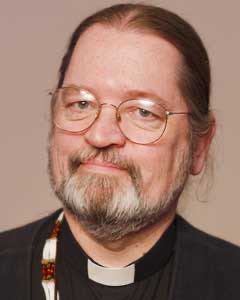(This article was published in the May issue of the Anglican Journal.)
In the traditional way, before colonization, itseems that song was an essential element of every aspect of indigenouslife. Songs were maps, histories and ceremonies. They containedimportant knowledge for hunters, and stored knowledge of the criticalpatterns necessary for successful agriculture. Songs helped eldersnegotiate the critical intersections of the spiritual realm and thoseaspects of life that we can readily see. When Chief Manuelito of theNavajo miraculously arrived among his imprisoned people in the early1860s-avoiding hostile tribes, Mexicans and U.S. troops to join hispeople in their sad exile-he explained that his safe journey was madepossible by a very strong song.
Songs allowed the story of Jesus to enter the hearts of the people, apart from the efforts of missionaries, more often than not, and very far away from the plans of church institutions. It was song that allowed the new story to converse with the old story; to allow the elders to journey in a new world, while attempting to maintain a basic integrity with the God-given best aspects of their own understanding of creation and a corresponding cultural life.
As the work of this spiritual journey was done in Indigenous languages and in worlds seemingly long forgotten by Westerners, it was done outside of the often critical gaze of Western missionaries. Indigenous missionaries-including James Settee, Henry Budd and Robert MacDonald-appear to have facilitated the process while remaining steadfastly loyal to the core elements of Christian faith.
When government and churches made indigenous ceremonies, prayer practices and symbols illegal, hymn singing became a refuge to many. Though church officials often opposed the emphasis on hymn singing, the practice grew over time, with a basic set of protocols that have changed little since the 1800s-though many places now use electrified musical instruments as an accompaniment.
Hymn singing was a vehicle for the Word to become flesh among indigenous peoples. It was also the way that many of their practices, values and ideals were preserved in the face of ferocious opposition, and today they are a part of the larger Christian heritage. The people of the land have found a way to sing back home to the vision of our elders and, at the same time, to Jesus. We hope many will sing along.
Bishop Mark MacDonald is national indigenous bishop of the Anglican Church of Canada.





